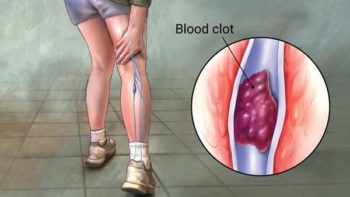Deep Vein Thrombosis and Pulmonary Embolism for the Correctional Nurse
Deep vein thrombosis (DVT) is a serious condition that occurs when a blood clot forms in a deep vein. Typically, these clots form in the lower leg, thigh, or pelvis, but they can also occur in the upper extremities and abdomen. DVTs are often undiagnosed. They can occur in any person, and may cause serious illness, disability and death if not identified and treated. The most serious complication of DVT is a pulmonary embolism (PE). A PE occurs when a piece of the clot breaks off, travels through the blood stream to the lungs, and causes a blockage. If the PE is small, and is identified and treated expeditiously, then the patient can recover. There may be lung damage, however. If the PE is large, it may totally occlude the vessel, stopping the blood from going to the lungs. In this case, the PE is fatal.
Research has shown that almost 33% of individuals with DVT will have long-term complications due to the damage done to the valves in the vein from a DVT to include swelling, pain, discoloration, and in severe cases, scaling or ulcers in the affected part of the body. This condition is called post-thrombotic syndrome (PTS). If severe, PTS may cause permanent disability. In addition, DVT and PE can become a chronic illness; about 30% of people who have had a DVT or PE are at risk for another occurrence.
In this class, the mechanism for blood clotting will be discussed. The signs and symptoms of a DVT and PE will be reviewed. The medication used to treat these disorders will be discussed, as will patient education for the person with a DVT.
